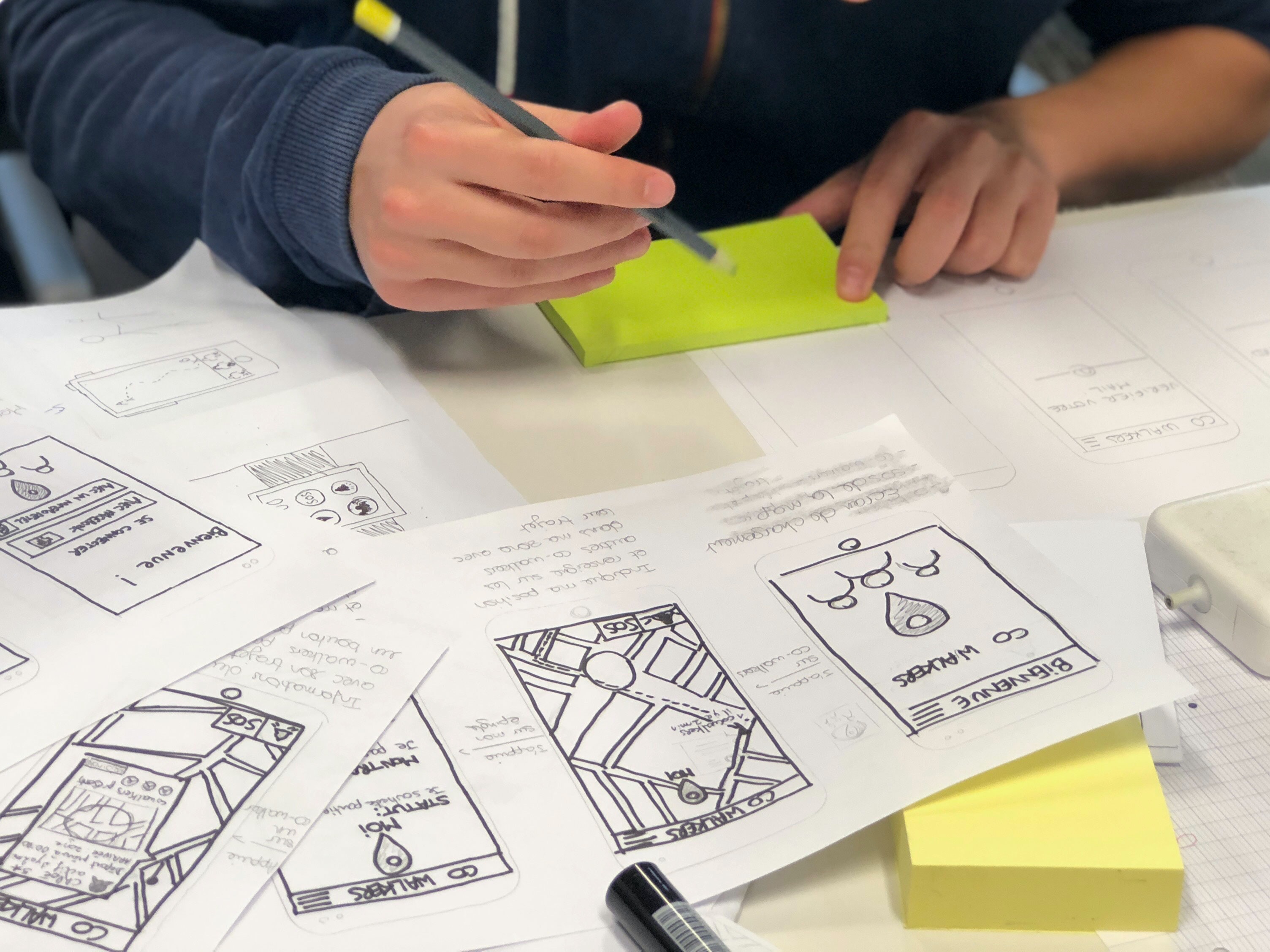
Simon Jenner
Monday 21 September 2020

Eric Ries gave us the brilliant Lean Startup Cycle of Build-Measure-Learn. But could the reverse, Learn-Measure-Build, be better-suited for your startup?
Posted in:
Startups
While we wish we could tell you that you can absolutely jump head-first into your Next Big Idea by immediately building an MVP, testing it, and modifying based on those test results, ending in a perfect, infallible product, we would be misleading you.
Just as every individual learns differently, your current startup may thrive from different processes than the next.
Build-Measure-Learn
Eric Ries’ Lean Startup Cycle is rooted in the Build-Measure-Learn Loop. This loop exists as a way to test your completed business model - not your product - in an attempt to validate your assumptions about your target market’s needs and whether or not your business plan will fill that need.
Through this process, the first official step is to build your idea - but wait: there’s a Step 0, the planning stage. While planning, you want to narrow down your target market and identify what their problem is that you wish to solve. Generate a hypothesis for how your business plan will satisfy their needs, plan the ways you will test the success of your plan,
Once you have a solid plan, you can begin the building process. In most cases, this involves building your MVP. It shouldn’t be anything fancy, but just a way to attract early adopters within your target market. Next is the measuring step. Launch your MVP with the testing metrics you generated in the planning stage in mind. Talk to your testers and find out why they did or did not like your MVP, continue open-ended dialogue with them, and use that data to confirm or reject your original hypothesis. Finally, learn from those metrics to alter your business plan and amend your MVP. Come back better and stronger, and repeat the loop.
As you can imagine, this process has a number of benefits. The BML Process allows for speed; in the startup world, we know how valuable time is. You also can use this process to gather an incredible amount of quantitative data that can be applied to every corner of your business. Lastly, as previously mentioned, the Lean Startup Cycle focuses on your business model above all else. This is invaluable information to have as any product you launch in the future cannot survive without a solid business foundation.
But wait… don’t confidently run off and jump in just yet…
The con here is that there is no guarantee you will actually learn anything of value by simply offering your MVP to the market. This process is referred to as Spaghetti Testing - throw it at the wall and see if it sticks. This process has come to be a bit too risky for some more cautious founders.
Flip it Around: Learn-Measure-Build
There is another option if your business requires a more targeted, mathematical approach. Instead of Build-Measure-Learn, consider Learn-Measure-Build.
Through this approach, you will instead begin by forming a learning objective. Establish exactly what you want to learn that can benefit your business. Then you can move into the measurement stage. Knowing what question you are trying to answer, you can determine what data you need to collect to come to that answer. Lastly, you build - but not necessarily an MVP. Tristan Kromer suggests an MVT - or a Minimum Viable Test - to collect this data and answer the question at hand.
The benefit of Learn-Measure-Build is that you are able to make sure you are heading in the right direction before you accelerate forwards. With a collection of necessary data, you’re more likely to stay on track towards your intended goal.
However, this method does also come with a drawback. The Learn-Measure-Build approach gives you great data, but primarily only in regard to what you are actively seeking. By partaking in the original Lean Startup Cycle of Build-Measure-Learn, you may gather a lot of data that become valuable later on, or even unveil an unknown direction or alternate route you can take your business in that will be more successful.
Conclusion
Overall, you have to decide which cycle will be the most beneficial to your startup. You may be more inclined to consistently build and run tests, then learn from your outcomes - but the next guy may be just as successful by creating a learning outcome and defining his entire process prior to jumping in.
If you’ve taken some time to weigh your options and would like to proceed with the Build-Measure-Learn approach, we can help. Sign up for our No-Code Bootcamp today to get started.
Just as every individual learns differently, your current startup may thrive from different processes than the next.
Build-Measure-Learn
Eric Ries’ Lean Startup Cycle is rooted in the Build-Measure-Learn Loop. This loop exists as a way to test your completed business model - not your product - in an attempt to validate your assumptions about your target market’s needs and whether or not your business plan will fill that need.
Through this process, the first official step is to build your idea - but wait: there’s a Step 0, the planning stage. While planning, you want to narrow down your target market and identify what their problem is that you wish to solve. Generate a hypothesis for how your business plan will satisfy their needs, plan the ways you will test the success of your plan,
Once you have a solid plan, you can begin the building process. In most cases, this involves building your MVP. It shouldn’t be anything fancy, but just a way to attract early adopters within your target market. Next is the measuring step. Launch your MVP with the testing metrics you generated in the planning stage in mind. Talk to your testers and find out why they did or did not like your MVP, continue open-ended dialogue with them, and use that data to confirm or reject your original hypothesis. Finally, learn from those metrics to alter your business plan and amend your MVP. Come back better and stronger, and repeat the loop.
As you can imagine, this process has a number of benefits. The BML Process allows for speed; in the startup world, we know how valuable time is. You also can use this process to gather an incredible amount of quantitative data that can be applied to every corner of your business. Lastly, as previously mentioned, the Lean Startup Cycle focuses on your business model above all else. This is invaluable information to have as any product you launch in the future cannot survive without a solid business foundation.
But wait… don’t confidently run off and jump in just yet…
The con here is that there is no guarantee you will actually learn anything of value by simply offering your MVP to the market. This process is referred to as Spaghetti Testing - throw it at the wall and see if it sticks. This process has come to be a bit too risky for some more cautious founders.
Flip it Around: Learn-Measure-Build
There is another option if your business requires a more targeted, mathematical approach. Instead of Build-Measure-Learn, consider Learn-Measure-Build.
Through this approach, you will instead begin by forming a learning objective. Establish exactly what you want to learn that can benefit your business. Then you can move into the measurement stage. Knowing what question you are trying to answer, you can determine what data you need to collect to come to that answer. Lastly, you build - but not necessarily an MVP. Tristan Kromer suggests an MVT - or a Minimum Viable Test - to collect this data and answer the question at hand.
The benefit of Learn-Measure-Build is that you are able to make sure you are heading in the right direction before you accelerate forwards. With a collection of necessary data, you’re more likely to stay on track towards your intended goal.
However, this method does also come with a drawback. The Learn-Measure-Build approach gives you great data, but primarily only in regard to what you are actively seeking. By partaking in the original Lean Startup Cycle of Build-Measure-Learn, you may gather a lot of data that become valuable later on, or even unveil an unknown direction or alternate route you can take your business in that will be more successful.
Conclusion
Overall, you have to decide which cycle will be the most beneficial to your startup. You may be more inclined to consistently build and run tests, then learn from your outcomes - but the next guy may be just as successful by creating a learning outcome and defining his entire process prior to jumping in.
If you’ve taken some time to weigh your options and would like to proceed with the Build-Measure-Learn approach, we can help. Sign up for our No-Code Bootcamp today to get started.
Ready to launch your startup idea with an MVP?
Download our step by step guide for non-technical founders to create a startup Minimum Viable Product (MVP)
Get the eBook

